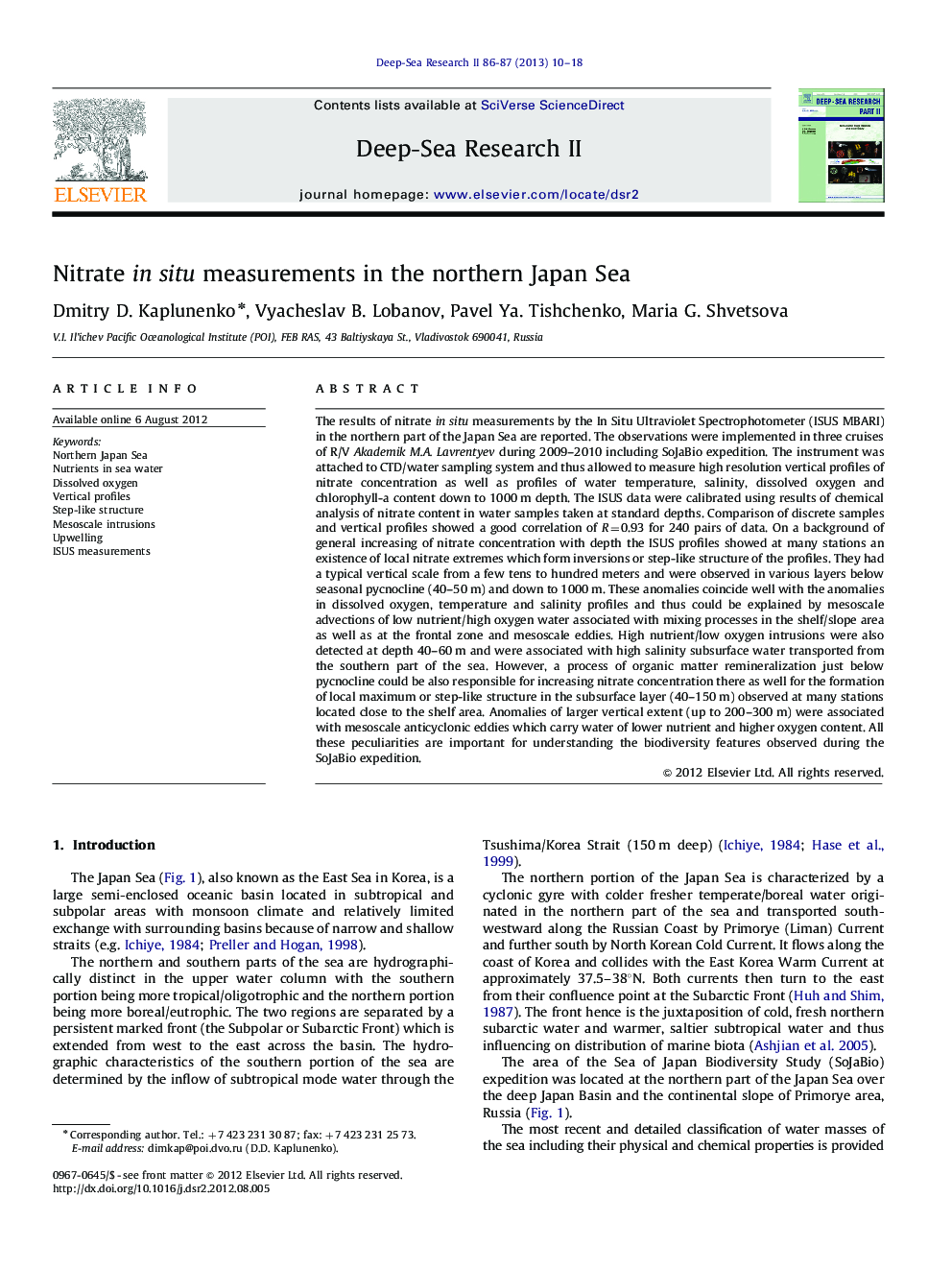| Article ID | Journal | Published Year | Pages | File Type |
|---|---|---|---|---|
| 4536646 | Deep Sea Research Part II: Topical Studies in Oceanography | 2013 | 9 Pages |
The results of nitrate in situ measurements by the In Situ Ultraviolet Spectrophotometer (ISUS MBARI) in the northern part of the Japan Sea are reported. The observations were implemented in three cruises of R/V Akademik M.A. Lavrentyev during 2009–2010 including SoJaBio expedition. The instrument was attached to CTD/water sampling system and thus allowed to measure high resolution vertical profiles of nitrate concentration as well as profiles of water temperature, salinity, dissolved oxygen and chlorophyll-a content down to 1000 m depth. The ISUS data were calibrated using results of chemical analysis of nitrate content in water samples taken at standard depths. Comparison of discrete samples and vertical profiles showed a good correlation of R=0.93 for 240 pairs of data. On a background of general increasing of nitrate concentration with depth the ISUS profiles showed at many stations an existence of local nitrate extremes which form inversions or step-like structure of the profiles. They had a typical vertical scale from a few tens to hundred meters and were observed in various layers below seasonal pycnocline (40–50 m) and down to 1000 m. These anomalies coincide well with the anomalies in dissolved oxygen, temperature and salinity profiles and thus could be explained by mesoscale advections of low nutrient/high oxygen water associated with mixing processes in the shelf/slope area as well as at the frontal zone and mesoscale eddies. High nutrient/low oxygen intrusions were also detected at depth 40–60 m and were associated with high salinity subsurface water transported from the southern part of the sea. However, a process of organic matter remineralization just below pycnocline could be also responsible for increasing nitrate concentration there as well for the formation of local maximum or step-like structure in the subsurface layer (40–150 m) observed at many stations located close to the shelf area. Anomalies of larger vertical extent (up to 200–300 m) were associated with mesoscale anticyclonic eddies which carry water of lower nutrient and higher oxygen content. All these peculiarities are important for understanding the biodiversity features observed during the SoJaBio expedition.
